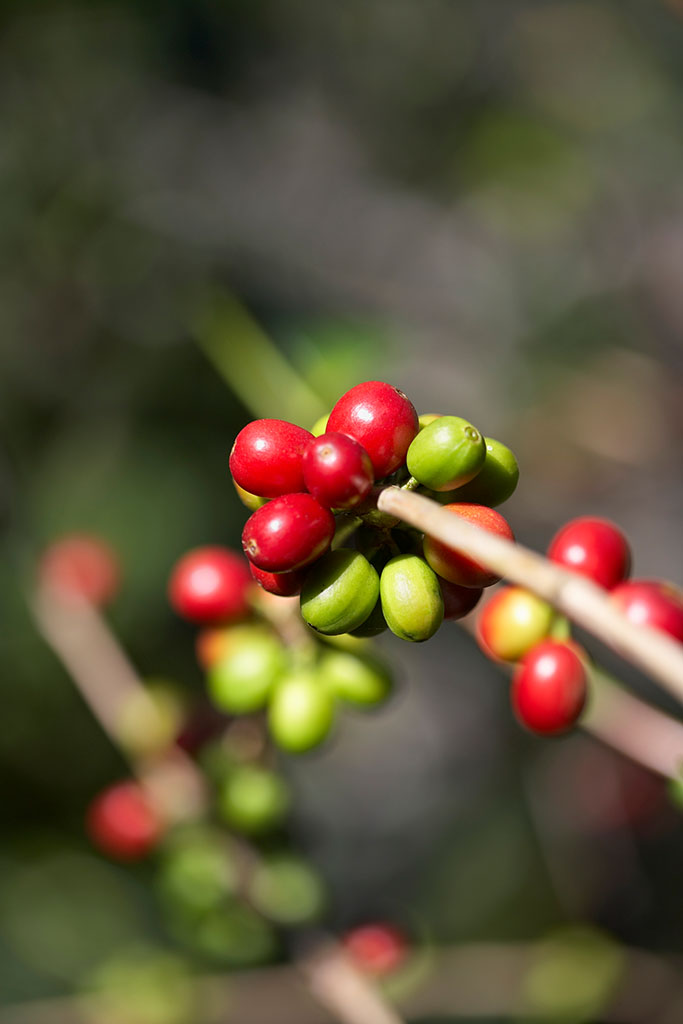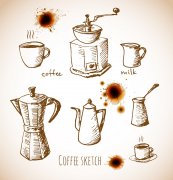What's the aroma of coffee? Caramelization and Mena reaction during coffee roasting
Fine coffee beans must be excellent varieties, such as the original bourbon species, mocha species, tipica species, these species produced coffee beans have a unique aroma and flavor, far from other species can be compared, but the relative yield is low, in recent years in pursuit of disease resistance and yield improvement, there have been a lot of improved species, such as Kenya to promote a large number of high-yield rurial11 species, but taste and quality greatly reduced, of course, can not be called "fine coffee".
A few days before Napoleon's death on St. Helena in 1821, his valet Marshal Bertrand wrote of Napoleon's begging: "He asked twenty times this morning if I could give him some more coffee. "No, master, the doctor ordered only one spoonful of coffee." Time is not yet up, your stomach is not good, drink early will only vomit early. He threw up nine times this morning. A hero who used to dominate the world, lead armies, and be feared by everyone, now he is reduced to begging for coffee and obeying like a child. Begging again and again, being rejected again and again, but not angry. It's a sad sight."
In addition to caffeine, the fascinating aroma of coffee is also the main reason why Napoleon, me and many coffee fans miss coffee all the time. But why does coffee smell so good? The most important thing, of course, is that the coffee beans themselves are rich in various raw materials, such as carbohydrates, proteins, lipids, organic acids, etc. After being heated and roasted, a series of complex reactions will be initiated to create an attractive aroma.
Two of the most important reactions are caramelization (oxidation and browning of sugars) and Maillard reaction (reaction of amino acids with sugars). Both reactions require sugars, and raw beans are rich in sucrose, which provides the material needed for both reactions. Previous studies have also found a positive correlation between sucrose content and coffee bean flavor. As can be seen from the table below, Arabica has twice the amount of sucrose in raw beans as Robusta, which also explains why Arabica coffee beans taste better than Robusta.
caramelization reaction
One time I ordered a cup of Guatemala-Huehuetenango near the Kaohsiung Cultural Center and spent a beautiful afternoon with My Life As An Explorer by Sven Hedin. After drinking coffee, I accidentally found that the dried coffee stains at the bottom of the cup were arranged into interesting patterns. I picked them up and looked at them to see if I could see the lottery numbers for the next big lottery. I didn't see them for a while.
The patterns looked more like an explorer marching through the rolling brown sand dunes of the desert. Suddenly a burst of caramel sweet smell flashed, and then carefully smell, sweet caramel taste unexpectedly came from the bottom of the cup, I ordered slightly Tentnam fruit is not black coffee? Why is there caramel sweetness? Later, it was discovered that black coffee itself is really sweet, especially caramel sweet most obvious! However, the sweetness of each coffee varies according to the type of bean and the way it is roasted.
The sugar content in coffee beans undergoes caramelization reaction at about 170~200℃, which is exactly the melting point of sucrose (185℃) and the temperature of the first explosion stage of coffee beans roasting. The products of caramelization are divided into two parts:
The dehydrated product of sugar, caramel or brown
The cracking products are mainly volatile aldehydes and ketones.
In general, caramelization produces roasted aromas, caramels, and colors, as well as other aromatic compounds such as maltol, Cyclotene, furans, and so on, which can also be found in red wine, juice, cream, and other foods.
However, if you caramelize too much during the roasting process, it is not a good thing. Instead, it will cause carbonization and make the coffee dry and bitter. If not caramelized enough, the aroma will be dull and lack of depth.
Maillard reaction
Recently, more and more coffee shops put roasters in front of the store to bake themselves, which not only saves costs but also controls the quality. Therefore, walking in the street can often smell the unique aroma of roasted coffee beans, which has the burning of plant fibers blue smoke burnt smell, cream milk yellow sweet fragrance, brown toast bread fragrance and so on all kinds of smells gathered together. Most of these rich flavors come from the Menard reaction during baking.
The Mena reaction can be divided into three stages:
Amadori Molecular Rearrangement by Carbonylamine Condensation
II. Medium-term:
Amadori molecular rearrangement product fructosamine dehydration to HMF (hydroxymethylfurural)
Deamination of fructosamine to reduce ketone
Interaction of Amino Acids with Dicarbonyl Compounds
III. Final Stage:
aldol condensation
Melanin-forming polymerization
In addition to carbohydrates, proteins account for about 11% of the raw bean weight, and the amino acids contained in these proteins are just the raw materials for the Mena reaction. Menard reaction refers to a series of reactions between amino acids and reducing sugars (glucose, fructose, lactose, etc.) in food during heating. Mena reactions produce a wide variety of aromatic substances and pigments such as Pyridines, Pyrazines ,Oxazoles, Thiazoles, Pyrroles. Mena reaction plays an important role in the flavor of food cooking, whether it is sausage when the sausage turns black and emits flavor, crispy outside soft inside roast chicken, fragrant toast, these barbecue foods are behind the color and flavor of Mena reaction.
Coffee is blessed with a large and complex variety of chemicals, in addition to the above compounds, there are other organic acids, inorganic acids, plant alkaloids and so on. Not only sweet and beautiful ingredients, but also slightly bitter compounds give coffee a wider range of flavors and variations, creating a unique rich taste of coffee.
References:
Coffee Flavor Chemistry by Ivon Flament
What Makes that coffee smell so good? by Parliament, T. from CHEMTEC.
Han Huaizong (2008). Coffee Science. Taipei City: Shizhou Culture.

Important Notice :
前街咖啡 FrontStreet Coffee has moved to new addredd:
FrontStreet Coffee Address: 315,Donghua East Road,GuangZhou
Tel:020 38364473
- Prev

The drip filter can also make good coffee.
For the coffee machine itself, you can use the still abandoned dripping coffee machine in your home. If you want to buy a new one, here are some tips: cheap coffee makers don't work at all; don't buy new products with wifi or LED lights; you don't have to spend a lot of money. Here are a few tips for using the dripping coffee mechanism to make coffee: 1. Make sure the coffee machine comes from the inside.
- Next

The secret of good coffee how to make coffee taste good?
The term "fine coffee" was first put forward by Ms. Knudsen of the United States in Coffee and Tea magazine. At that time, Ms. Knudsen, as a coffee buyer at B.C. Ireland in San Francisco, was very dissatisfied with the neglect of the quality of raw coffee in the industry, and even some big roasters mixed a large amount of Robesda beans in the comprehensive beans, so she put forward the concept of fine coffee.
Related
- Beginners will see the "Coffee pull flower" guide!
- What is the difference between ice blog purified milk and ordinary milk coffee?
- Why is the Philippines the largest producer of crops in Liberia?
- For coffee extraction, should the fine powder be retained?
- How does extracted espresso fill pressed powder? How much strength does it take to press the powder?
- How to make jasmine cold extract coffee? Is the jasmine + latte good?
- Will this little toy really make the coffee taste better? How does Lily Drip affect coffee extraction?
- Will the action of slapping the filter cup also affect coffee extraction?
- What's the difference between powder-to-water ratio and powder-to-liquid ratio?
- What is the Ethiopian local species? What does it have to do with Heirloom native species?

